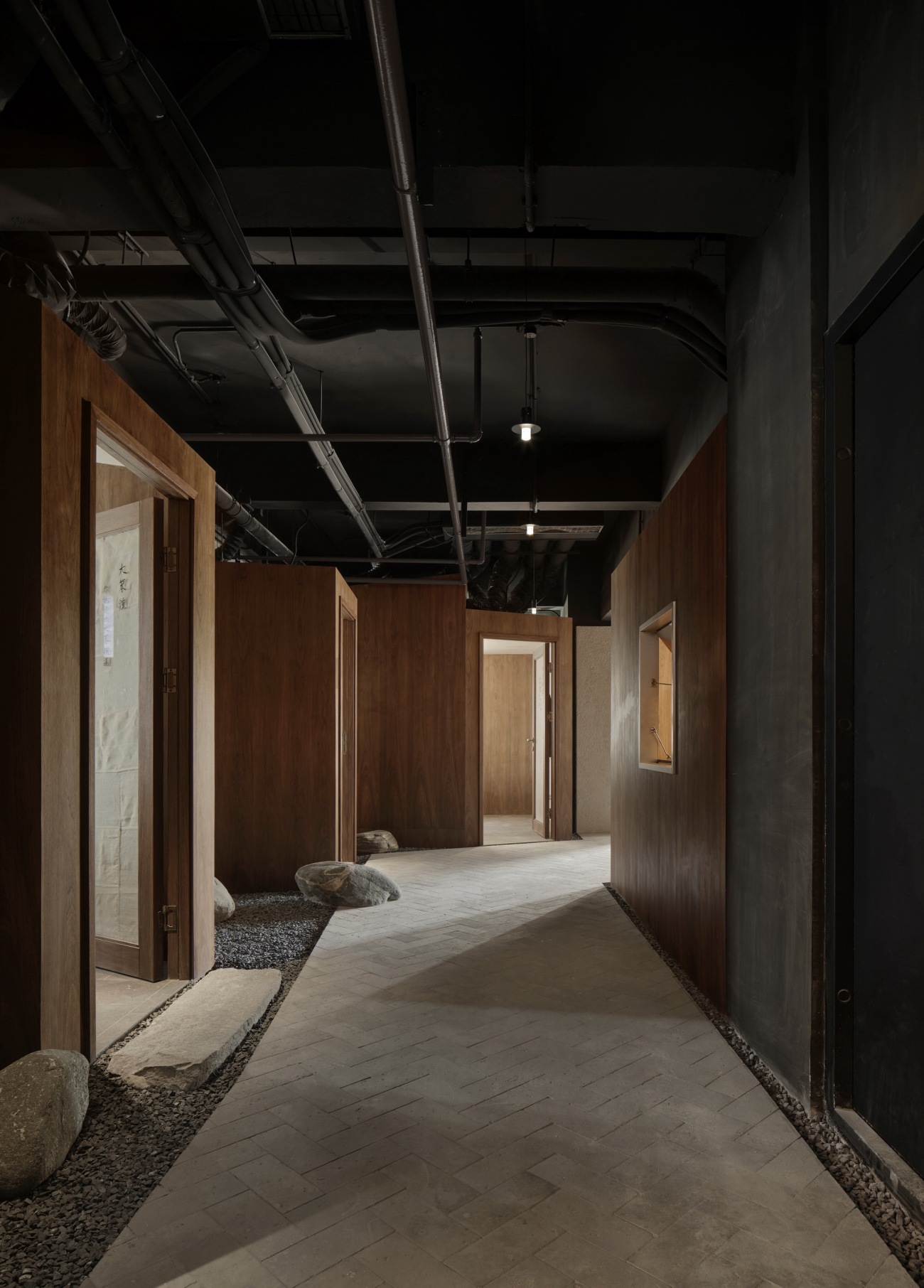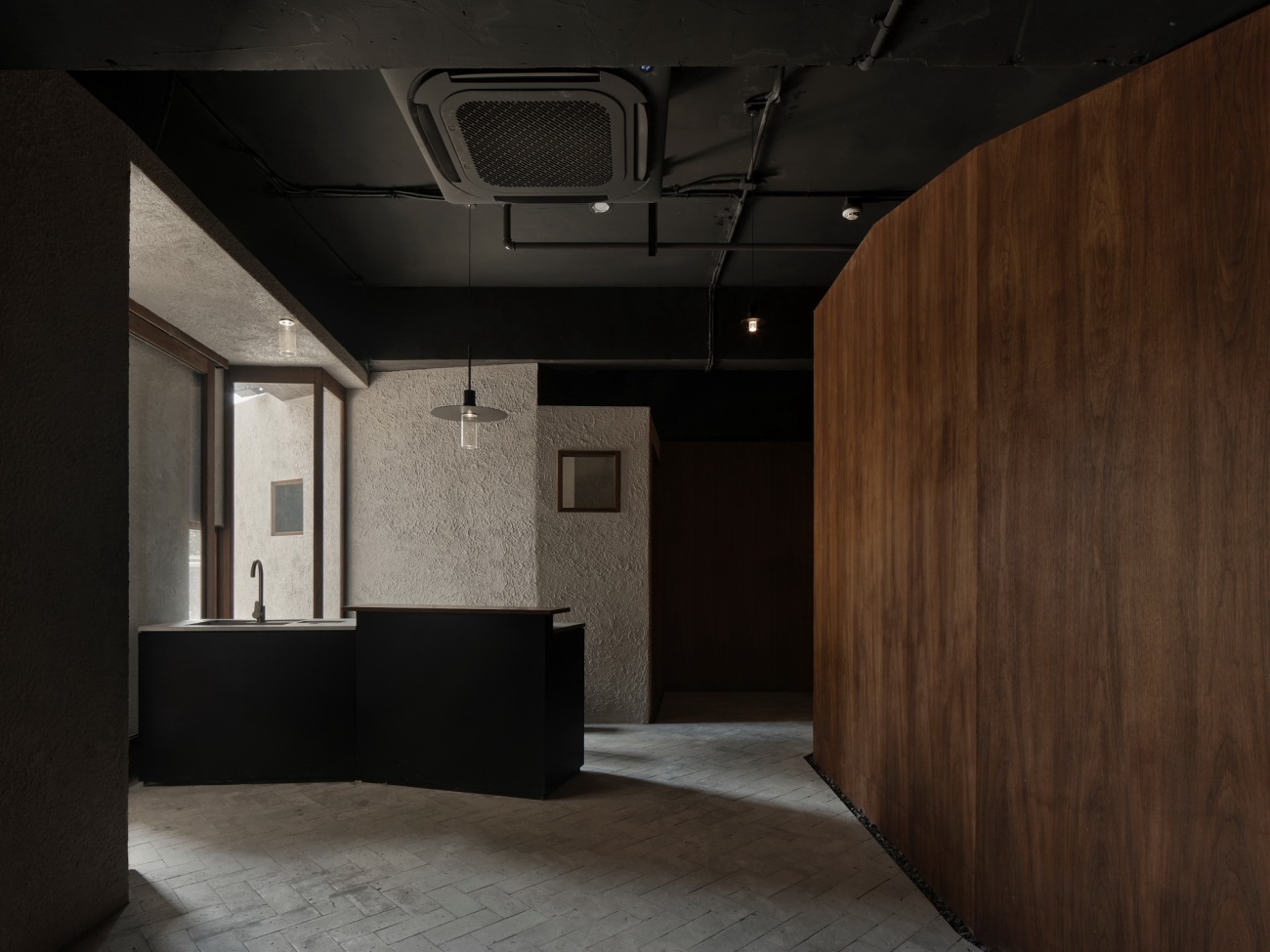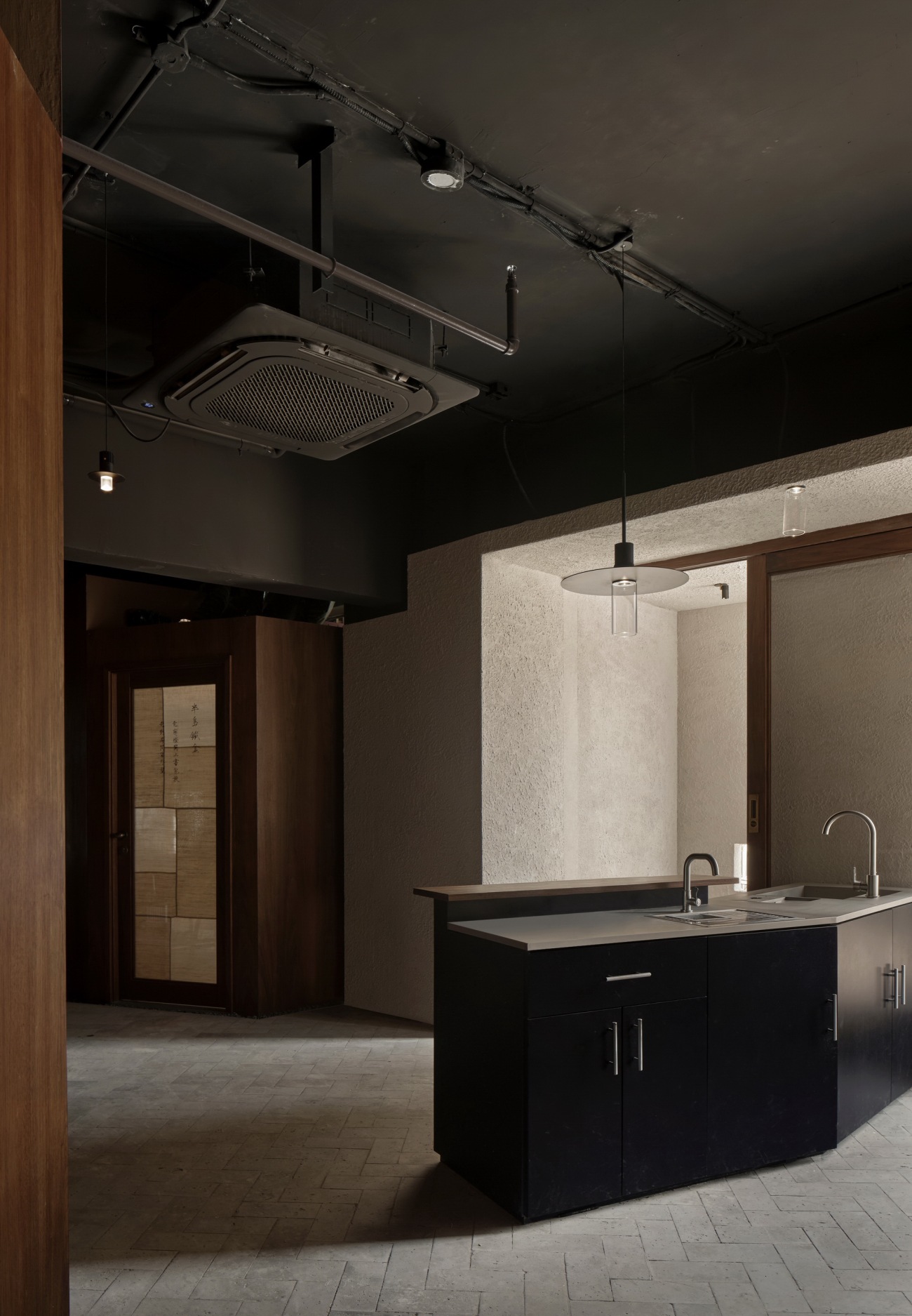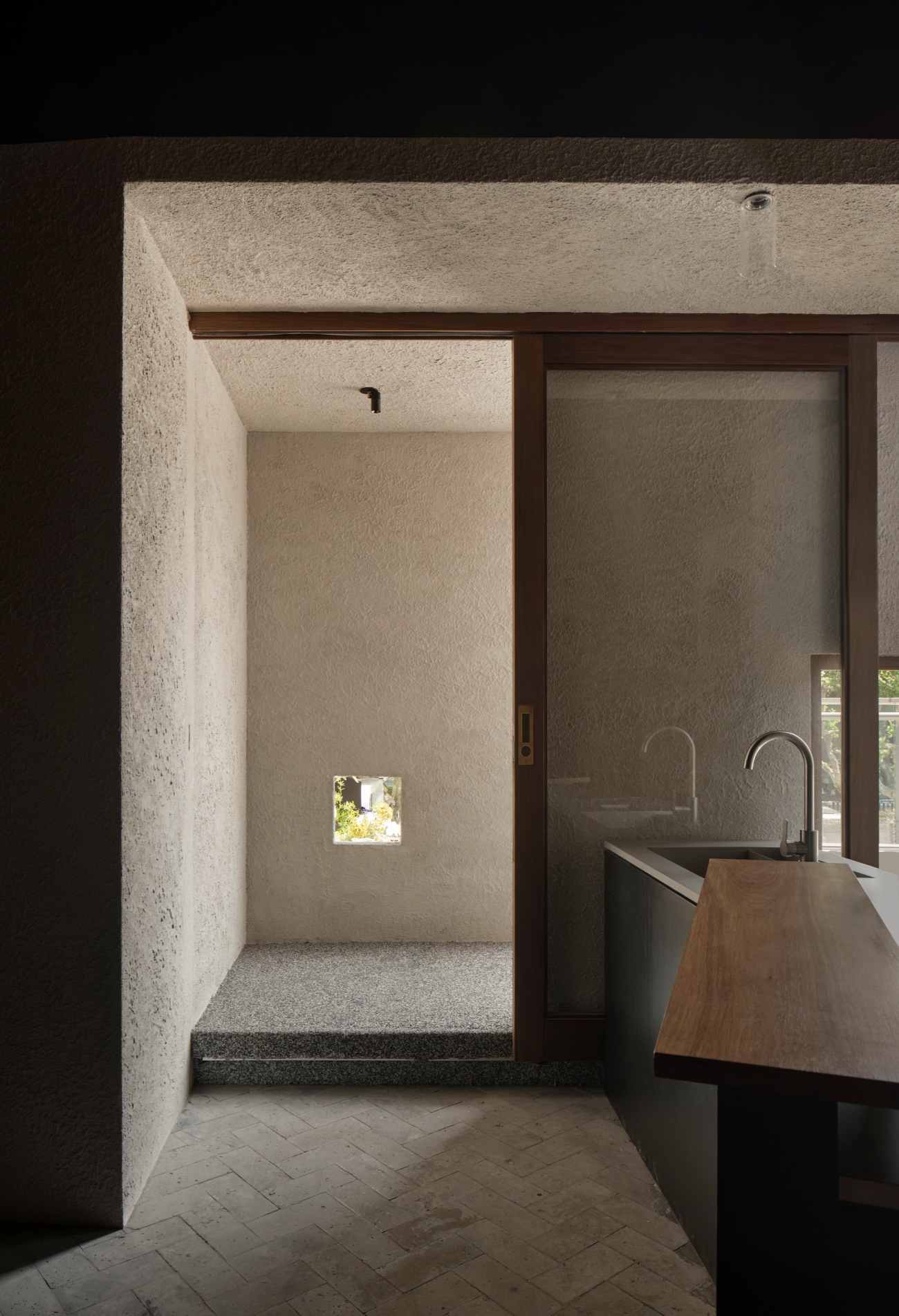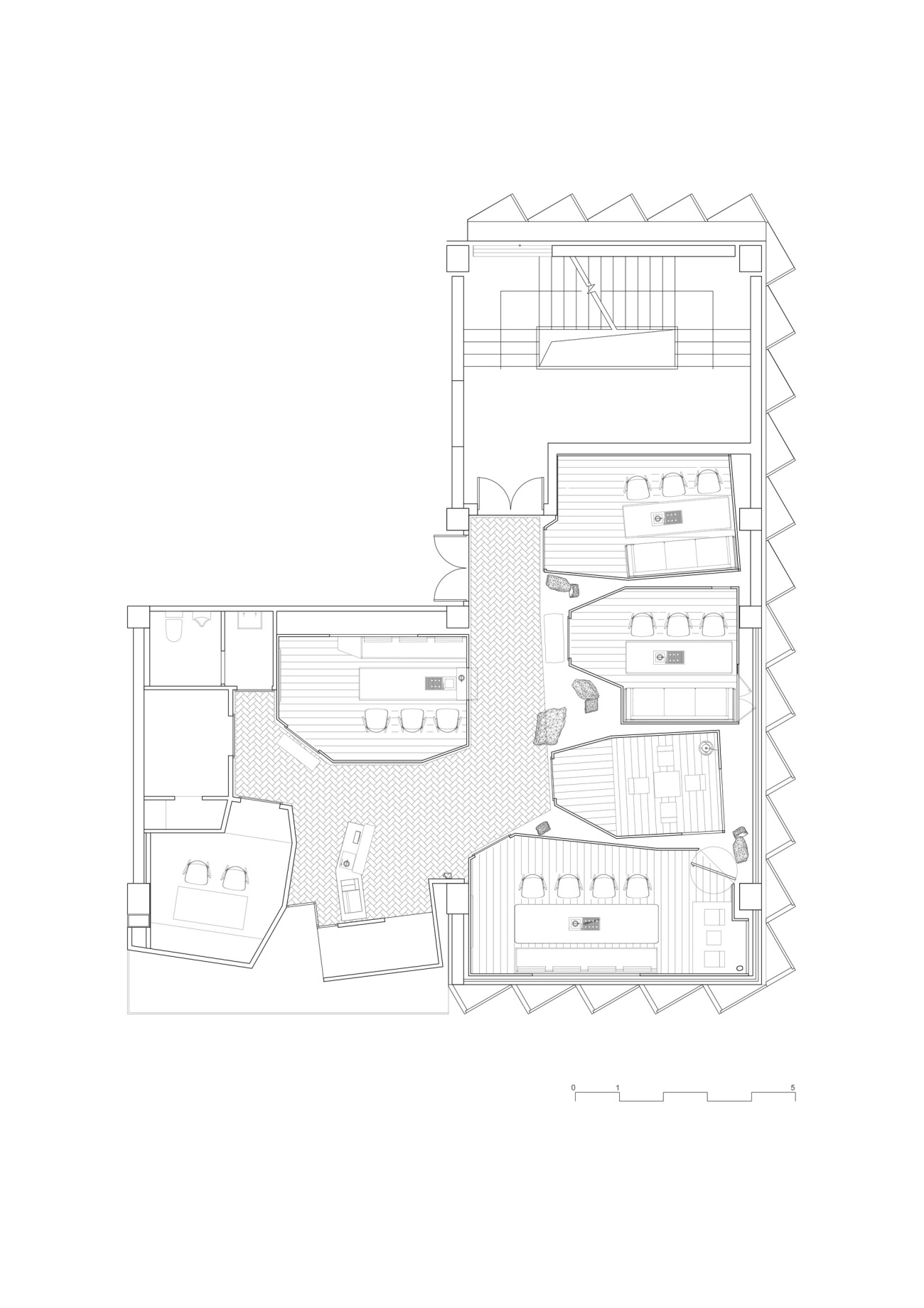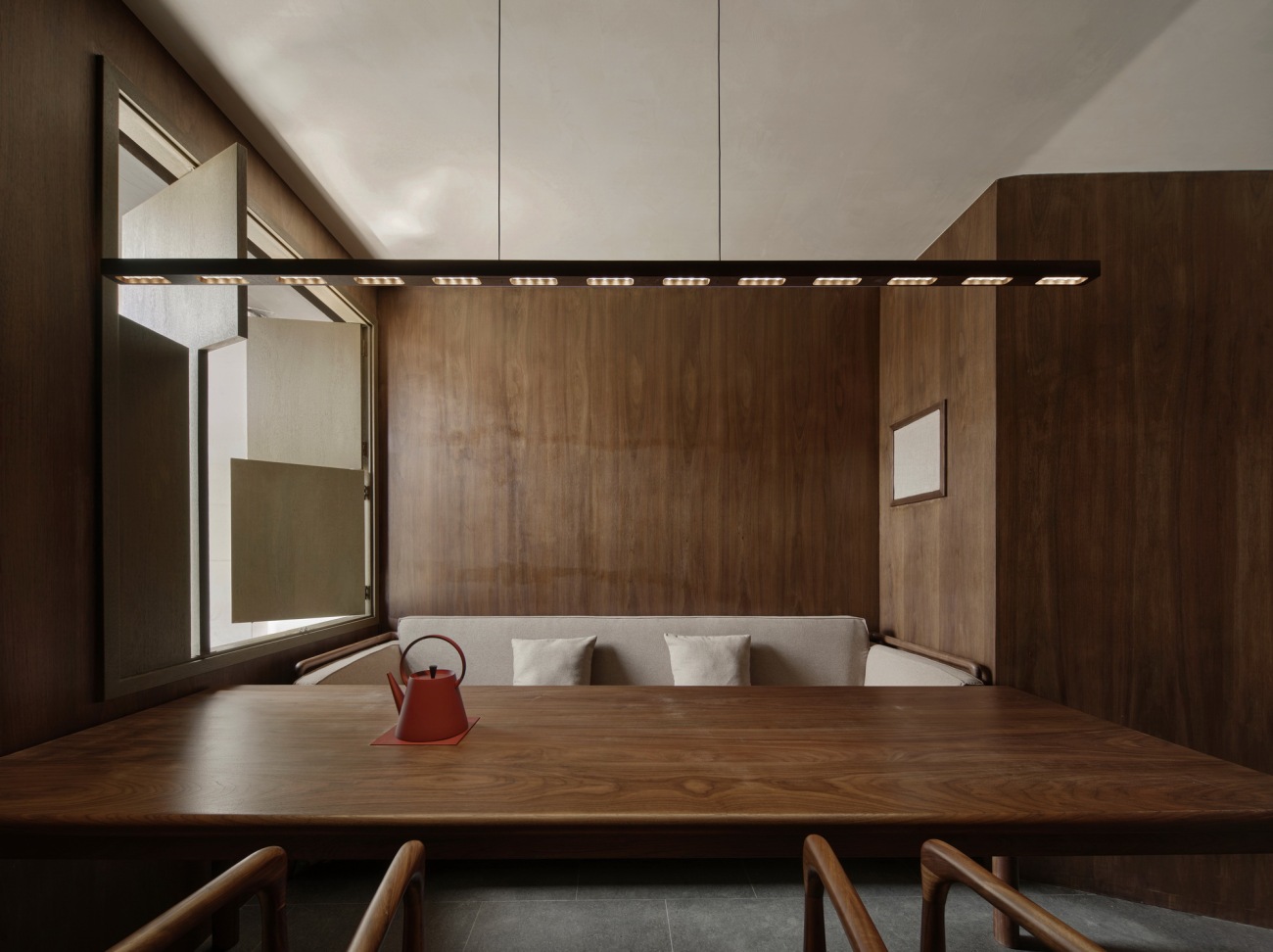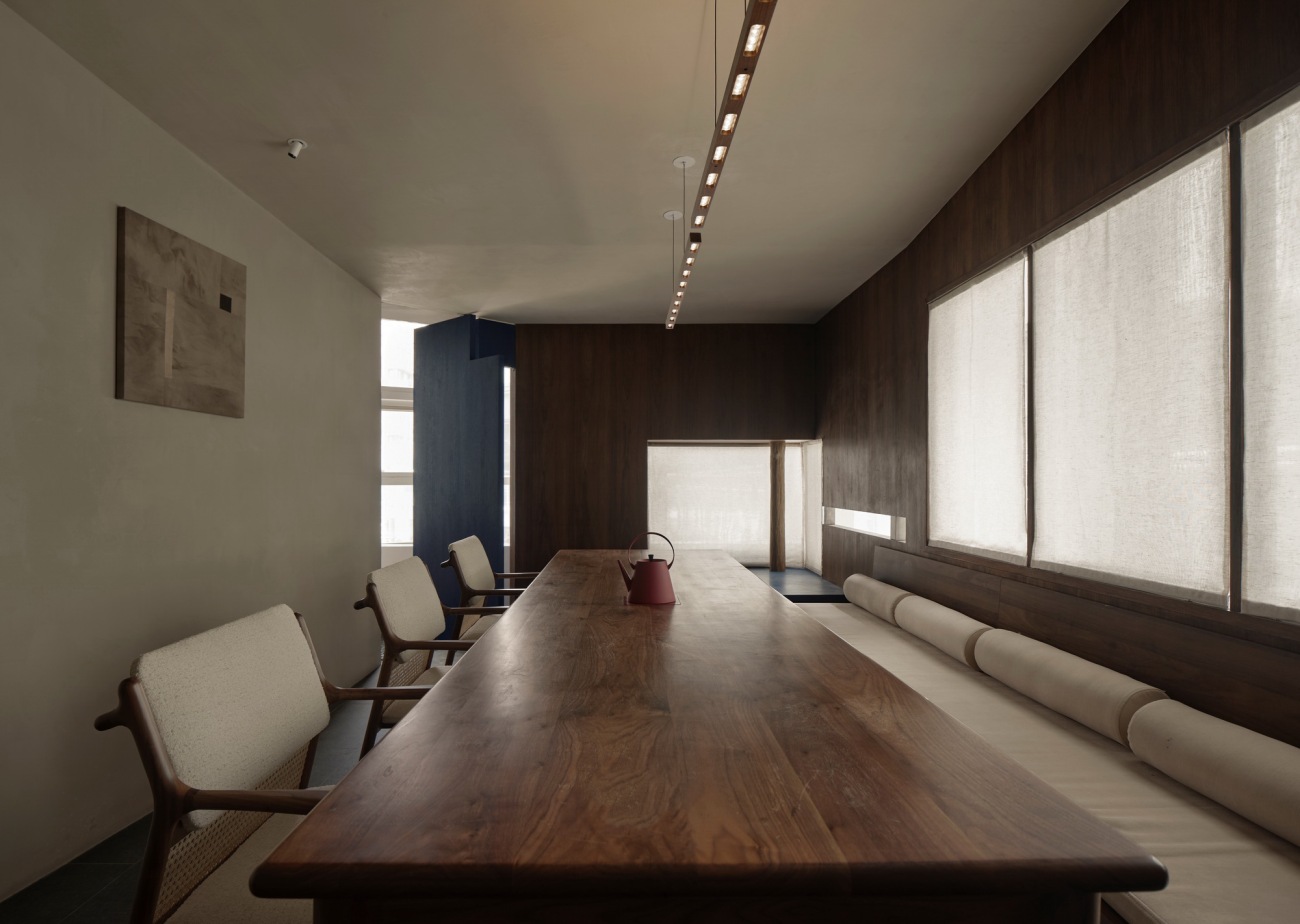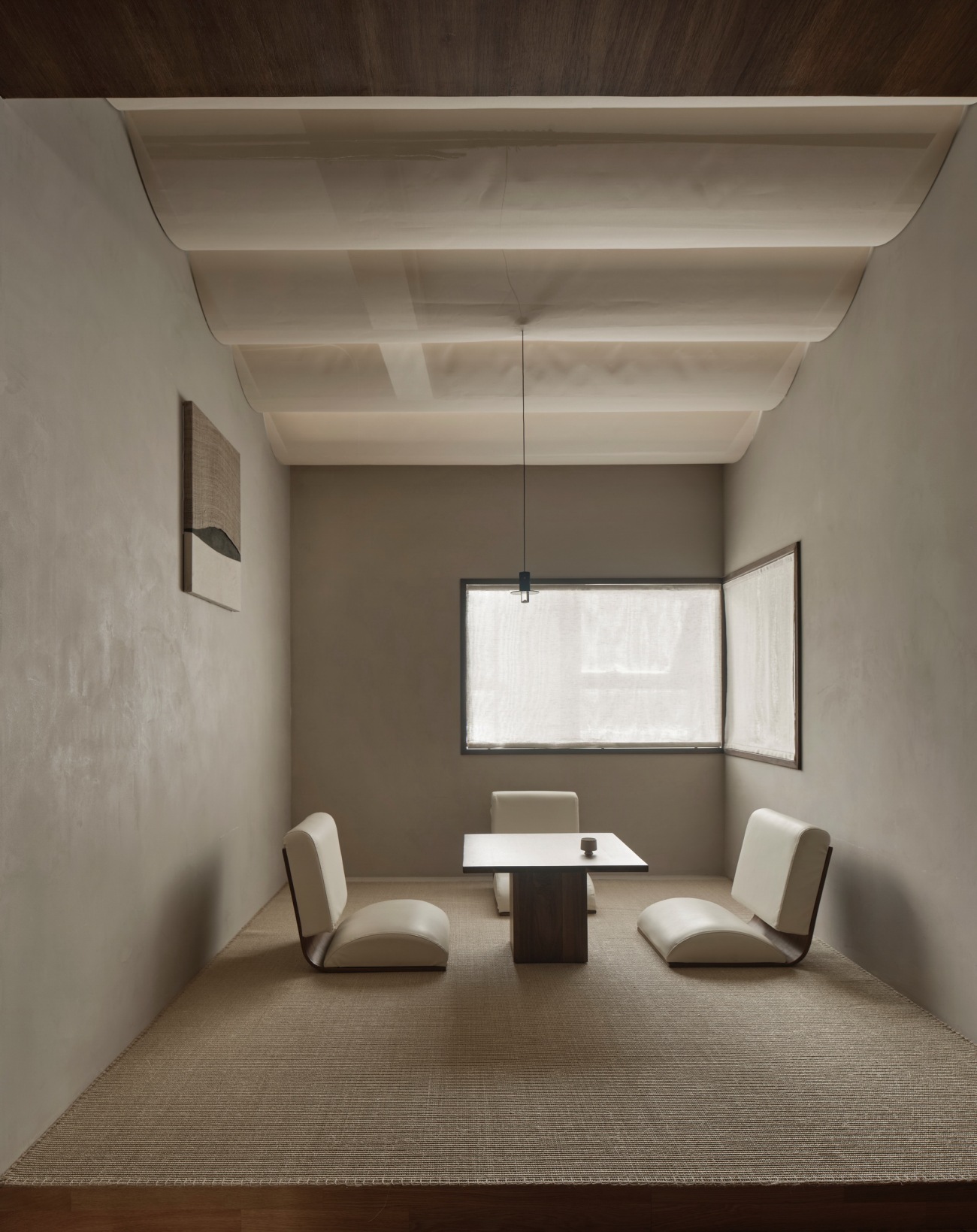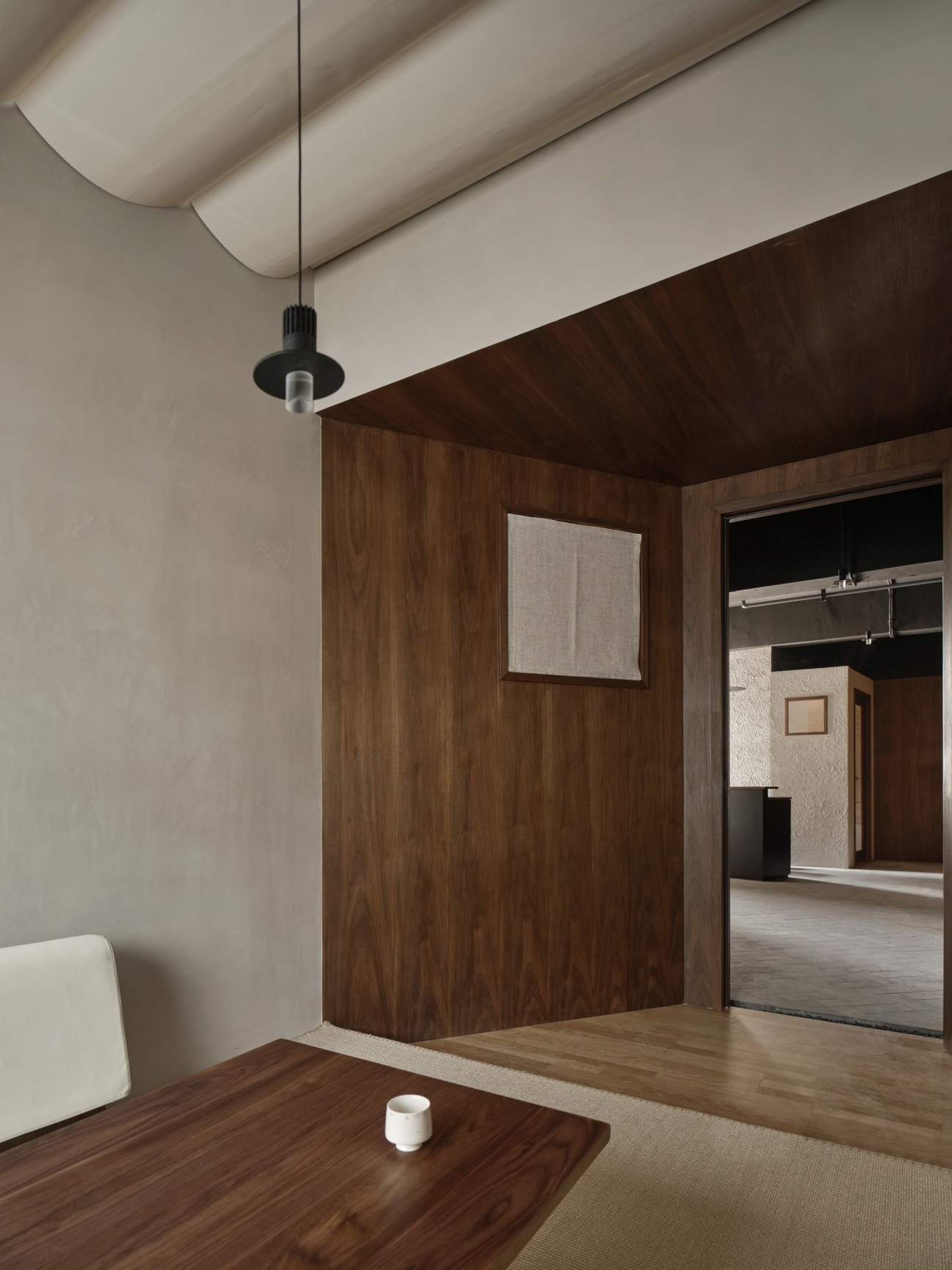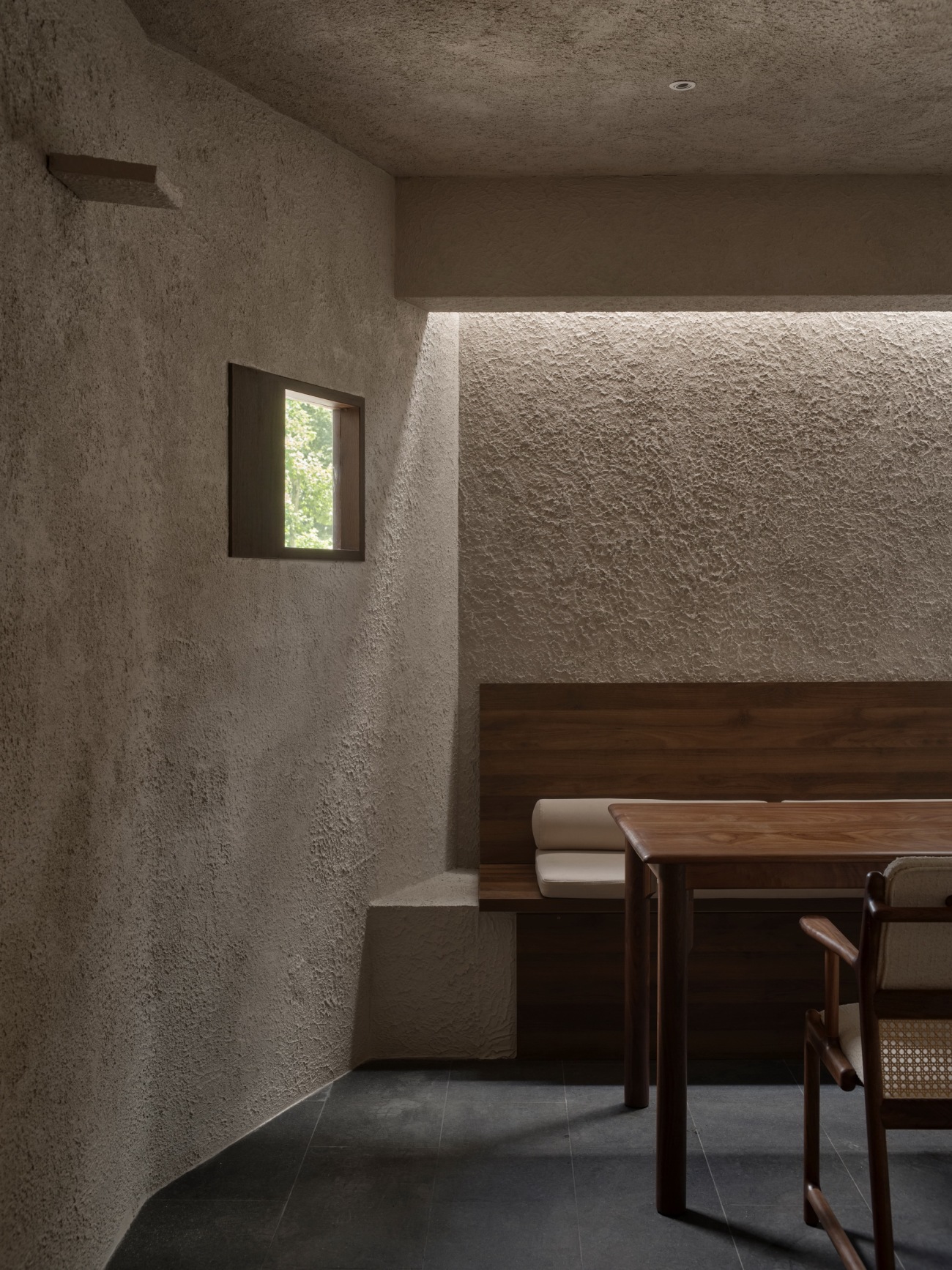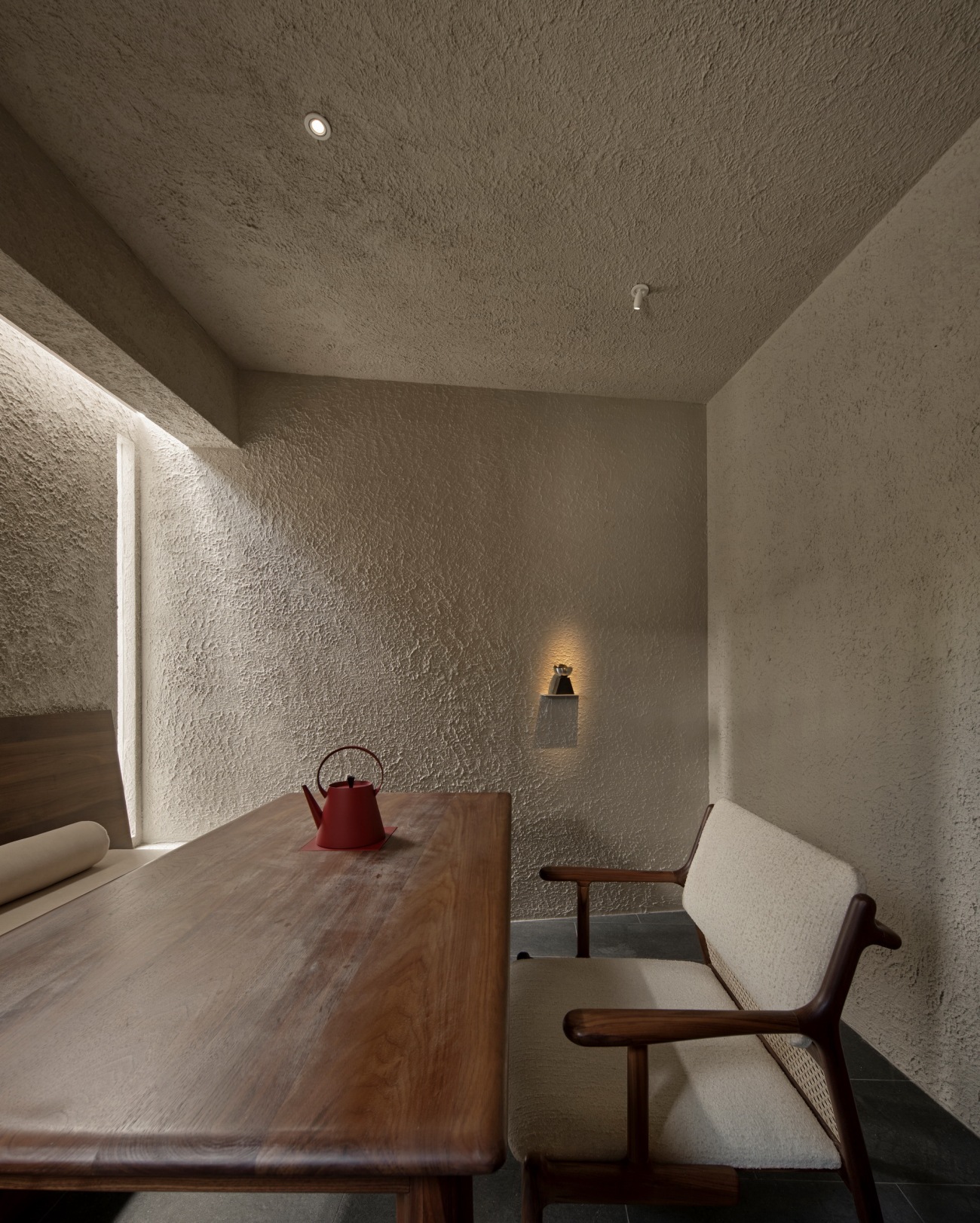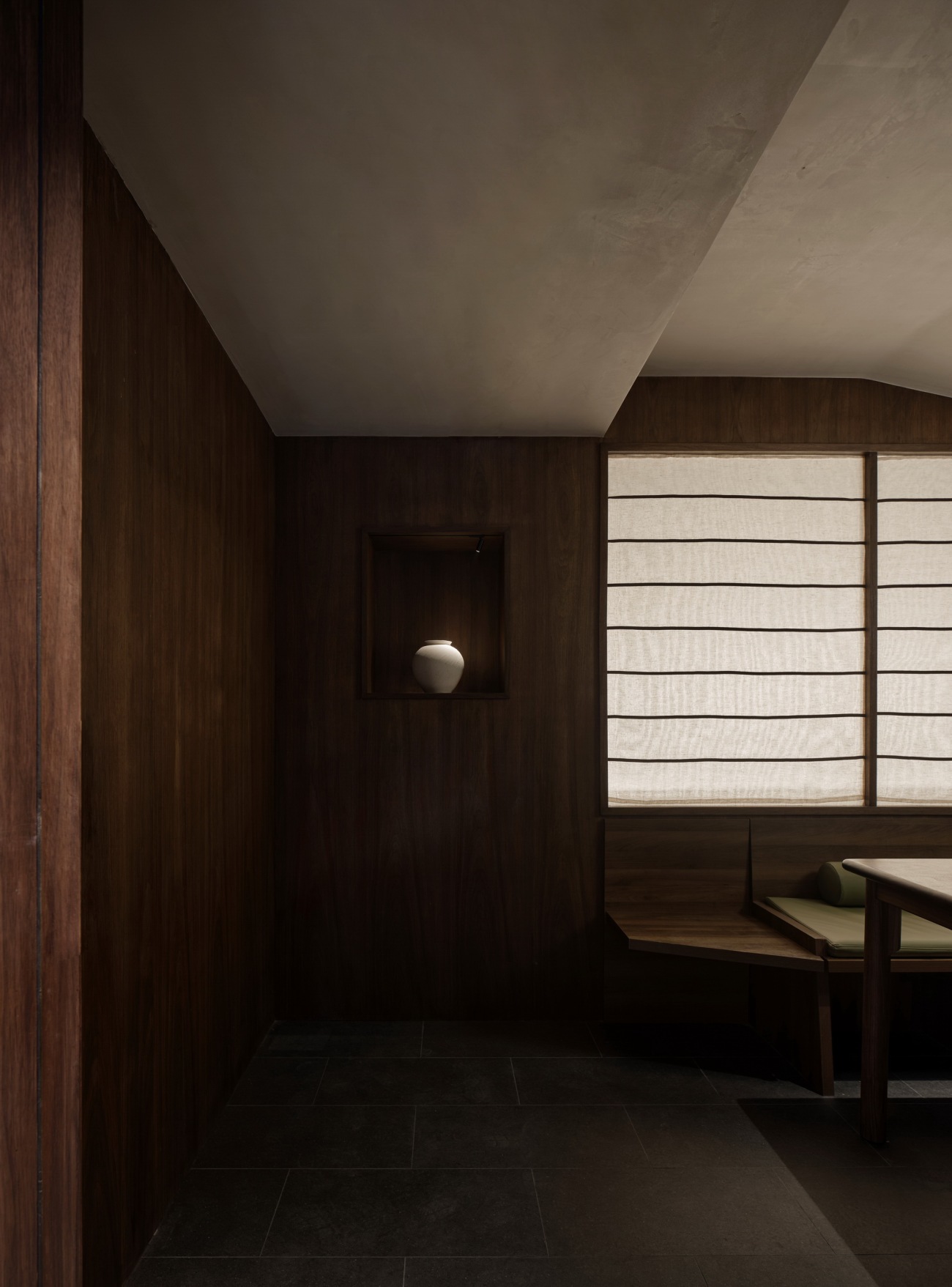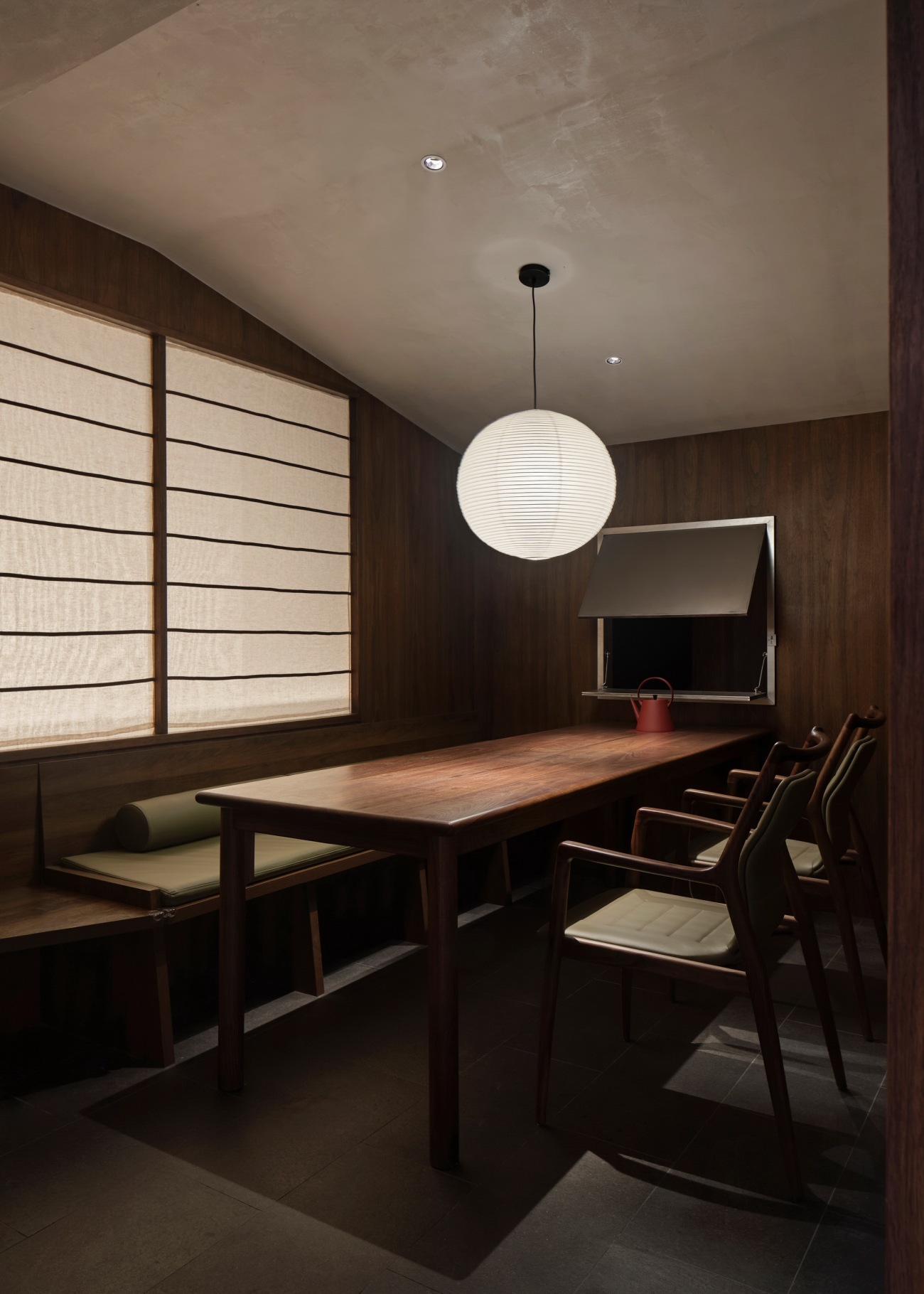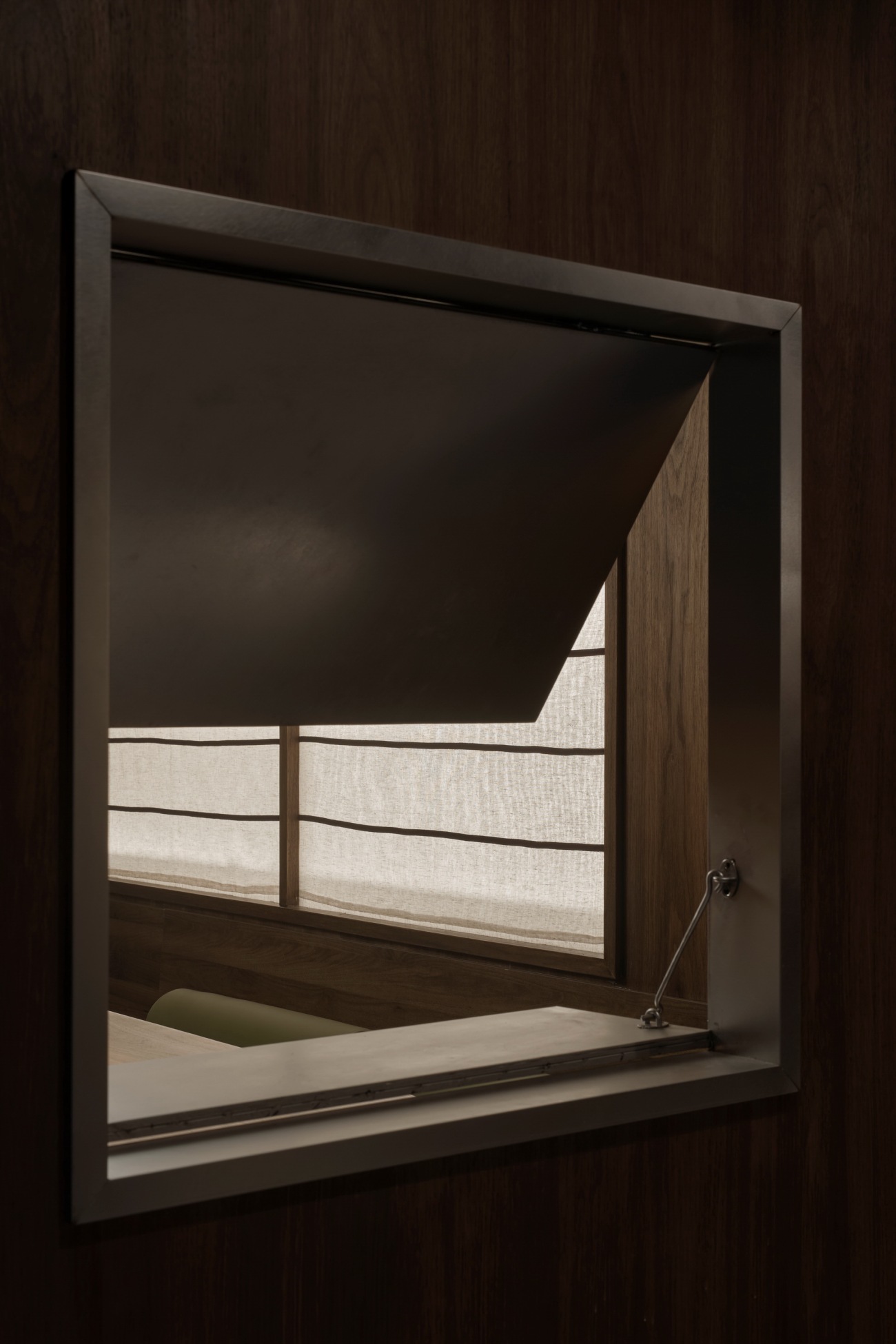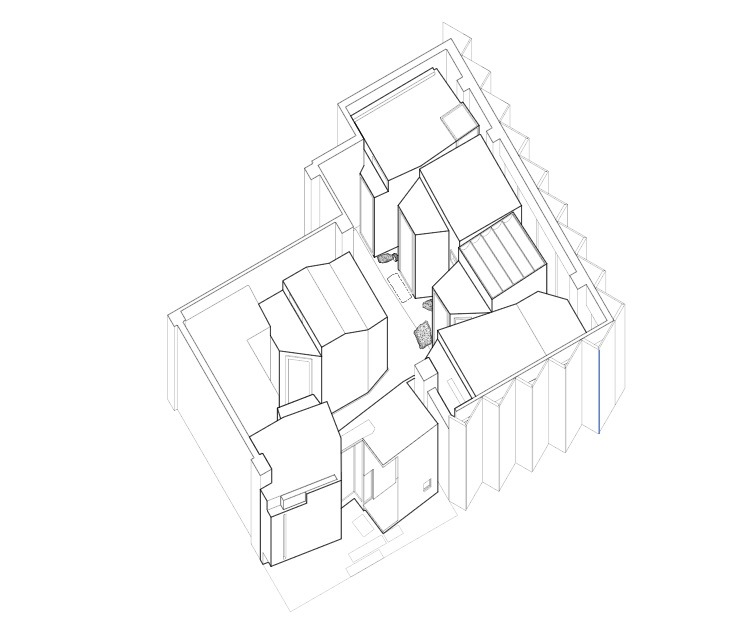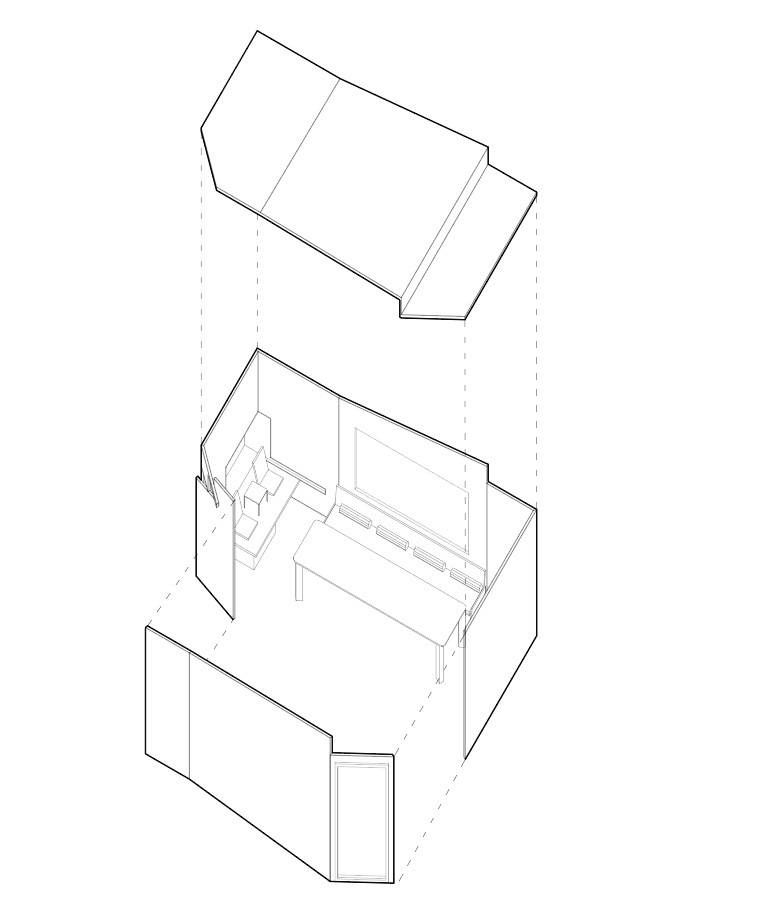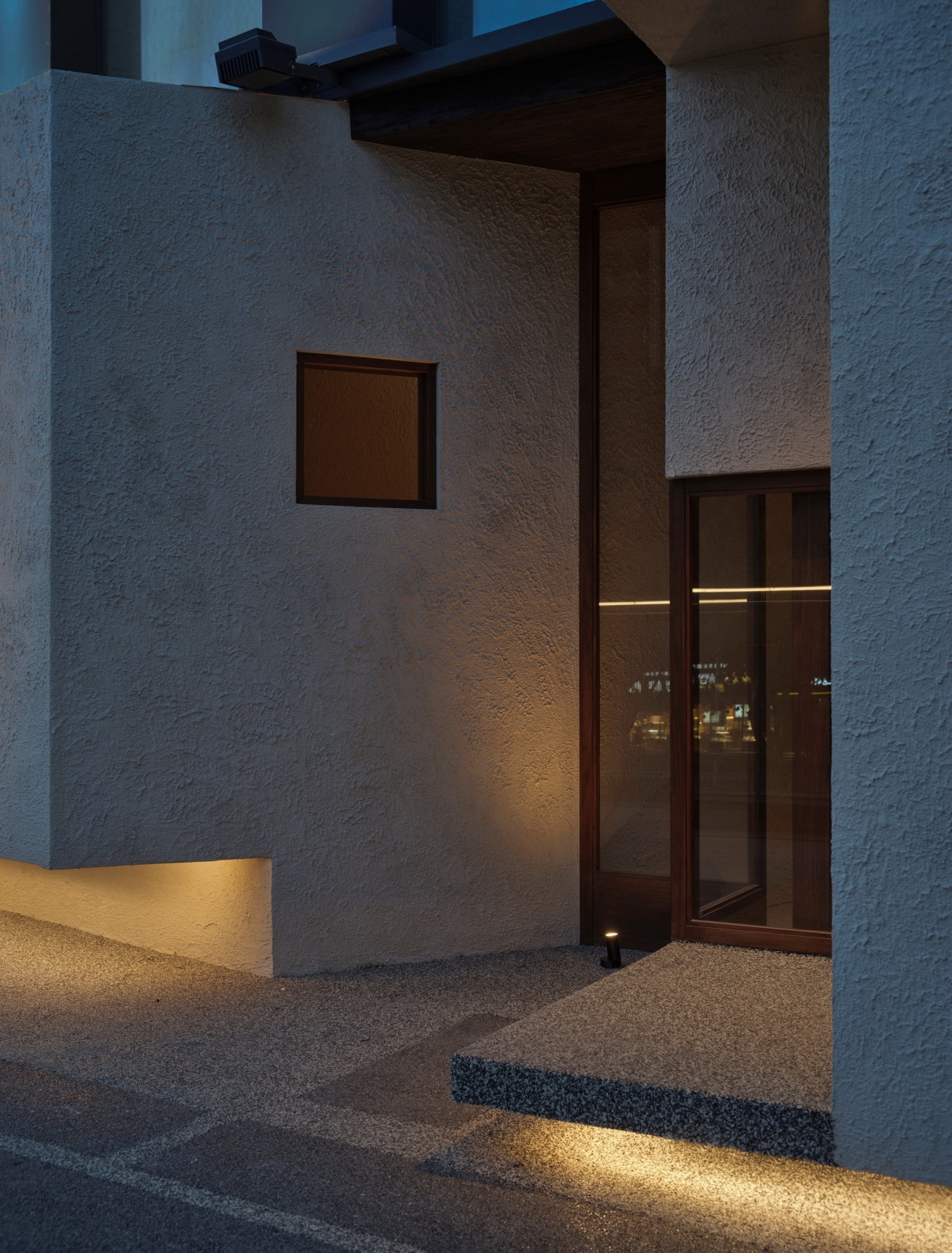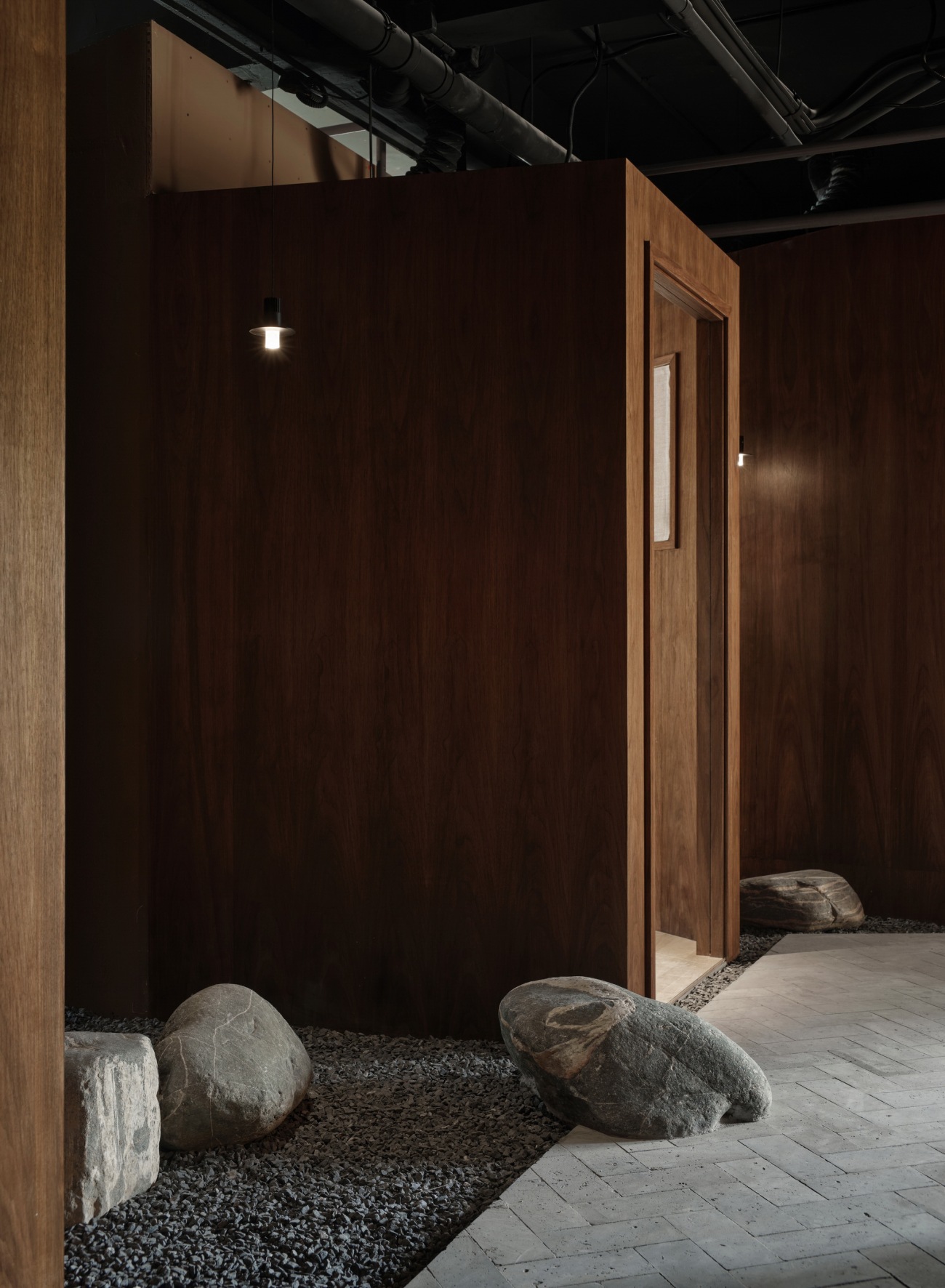▽茶室路径
▽外立面
▽接待区
▽接待区
▽接待区
不同于多数中式茶室点单茶品的消费模式,十七间茶馆的商业想法是将空间作为载体售卖“品茶时间”。经营者对茶叶的品种、最佳时令与产地都有着严格地把控和研究,除此外更期许饮茶应是一期一会的体验,当与空间、景致、温度与季节有恰到好处的配合。如同在城市中建立一个漂浮茶海上的孤岛,体验者可以暂时地抽身开平日琐碎,投入到由茶这种结合“自然与人工”所建构的体验中。阿巴斯·基亚罗斯塔米的电影《24帧》和意大利建筑师阿尔贝托·波尼斯的建筑语言是茶馆设计意向的来源。电影运用了流动影像和静止图像交融,通过24个视角将动与静,近与远,明与暗的变化,写出了空与无,瞬间一刻和弹拨时间的美感。在波尼斯住宅中有着许多模仿学习岩石形式语言的尝试,建筑与崎岖地貌的嵌合模糊了自然与人工的界限。我们尝试转译对两者的学习研究,促成了十七间茶馆的岩石形式与慢速时间体验。
Different from the consumption model of most Chinese teahouses, Seventeen Tea House's business idea is to use the space as a carrier to sell “tea time”. The operator has strict control and research on the varieties of tea leaves, the best season and the place of origin, in addition to the expectation that tea drinking should be a one-time experience, when there is a proper match with the space, the scenery, the temperature and the season. Like building an island floating on the sea of tea in the city, experiencers can temporarily withdraw from the trivialities of their daily lives and devote themselves to the experience constructed by tea, which combines “nature and artifice”.Abbas Kiarostami's movie 24 Frames and the architectural language of Italian architect Alberto Ponis are the sources of the design intention of the teahouse. The movie utilizes the intermingling of moving images and still images, and through 24 perspectives the changes of movement and stillness, nearness and distance, light and darkness are written with the beauty of emptiness and nothingness, instantaneous moments and the flicking of time. There are many attempts to imitate and learn the formal language of rocks in the Ponis Residence, where the embeddedness of architecture and rugged landscapes blurs the boundaries between the natural and the manmade. Our attempts to translate the study of both have led to the seventeen teahouses' experience of rock form and slow time.
▽平面图
基于此,在设计上聚焦于各自独立的6个房间。无论是凹凸有变的墙体还是斜切弯折的顶面,都有着一种区别于人造物的不规整质感,其自然有机的形态如同散落在砾石沙滩上的几块巨岩。采取这样的形式语言,一方面是避让空间中的柱与梁以尽量减少结构横穿造成对小空间氛围的打扰,同时形成与坐立不同身体姿态相对应的高低错落的空间体验;另一方面也尝试拟态一种自然造物所独有的景观属性。“巨岩”形成的聚落呈现出非有意识控制的组织感,公共空间由房间与房间的剩余部分自然形成,如同一条在沟壑嶙峋的山间穿行的曲折路径。
With this in mind, the design focuses on six separate rooms. Whether it is the bumpy walls or the slanted and curved ceiling, there is a sense of irregularity that distinguishes them from man-made objects, and their natural and organic forms are like pieces of giant rock scattered on a gravel beach. This formal language is adopted, on the one hand, to avoid columns and beams in the space in order to minimize the disturbance to the atmosphere of the small space caused by the structure crossing, and at the same time to form a space experience of staggered heights corresponding to the different body postures of sitting and standing; on the other hand, it also tries to mimic the unique landscape attributes of a natural artifact. The colony formed by the “giant rock” presents a sense of non-consciously controlled organization, and the public space is naturally formed by the rooms and the remaining parts of the rooms, just like a zigzagging path through the ravines and jagged mountains.
▽茶室01
▽茶室02
▽茶室03
基于不同房间所处位置的光照条件的不同,在房间内的墙面与顶面材料的选择上也有着不同的策略。临近入口处的房间处于平面上光照最好的位置,但室外景观并不理想,因此没有在墙面上设计窗口以排除外界干扰,而在顶面上设置了采光窗。在这个房间我们选择了有室外材料石灰砂浆般拉毛质感的涂料,晴朗天气阳光射入会在墙面形成阴影斑驳,使人有着身处岩洞般的感受。而在东侧,建筑立面本身的滤光玻璃幕墙降低了阳光强度,这一侧的房间设计了波浪垂坠的柔软织物的屋顶与胡桃木山纹饰面覆盖的墙体,以期使其阴翳柔和的氛围更甚。
Based on the different lighting conditions of the different rooms, there are different strategies for the selection of wall and ceiling materials in the rooms. The room near the entrance is in the best light position on the plan, but the outdoor view is not ideal, so instead of designing windows on the walls to exclude the outside world, we set up light windows on the ceiling. In this room, we chose to use paint with the brushed texture of lime mortar, an outdoor material, which creates shadows on the walls in sunny weather, giving the impression of being in a cavern. On the east side, where the light-filtering glass façade itself reduces the intensity of the sunlight, the rooms on this side have been designed with a roof of soft fabrics draped in waves and walls clad in walnut veneer, in order to add to the shadowy, soft atmosphere.
▽茶室04
▽茶室05
在茶馆空间中陈设了几处有着时间悠长流淌痕迹的景观,如枯木和山石,它们的存在使得空间与某种永恒性相连接,而身处其中的人更容易忽略此时此刻时间的经过。与景观相对的角度,各房间墙面上设置了不同开启方式的窗洞。有的仅为在递送茶品时开启,身处其中的人也只能略略一瞥。有的在窗口设置了参差斜开的转板,供枯朽的干木枝长入房间。光线透过各种不同的缝隙和窗口渗透进来,也将自然与野趣渗入到时间孤岛之中。
The teahouse space is furnished with several landscapes that bear the marks of the long passage of time, such as dead trees and rocks, whose presence connects the space to a certain timelessness and makes it easier for those in the space to ignore the passage of time in the here and now. In contrast to the landscape, the walls of the rooms are lined with windows that open in different ways. Some of them are opened only for delivering tea, and those who are in them can only catch a glimpse of them. In some cases, the windows are set up with differently slanted panels for the decaying dry wood branches to grow into the room. Light seeps in through the various gaps and windows, and nature and wildness seep into the island of time.
▽轴测图
▽茶室02爆炸轴测
▽入口
▽茶室03入口
项目名称:十七间茶馆
设计团队:周睿哲,杨竣博, 张思羿,温必福
项目地址:南京
建筑面积:160㎡
设计时间:2024年2月-3月
建设时间:2024年5月
材料:天然木皮板、染色木板、艺术涂料、水刷石
灯光:光维灯光设计有限公司
施工单位:南京易击装饰工程有限公司
摄影:Howie
联系邮箱:modumatelier@163.com
Project Name: Seventeen Teahouses
Design Team: Zhou Ruizhe, Yang Junbo, Zhang Siyi, Wen Bifu
Address: Nanjing
Building Area: 160㎡
Design Period:February-March 2024
Construction: May 2024
Material: Natural wood veneer panels, Stained wood panels, Art paint, Water brushed stone
Photography: Howie
Contact Email: modumatelier@163.com
更新日期:2024-09-27 14:40:06
非常感谢 衡建筑 带来的精彩项目, 查阅更多Appreciations towards Heng architecture for sharing wonderful work on hhlloo. Click to see more works!
